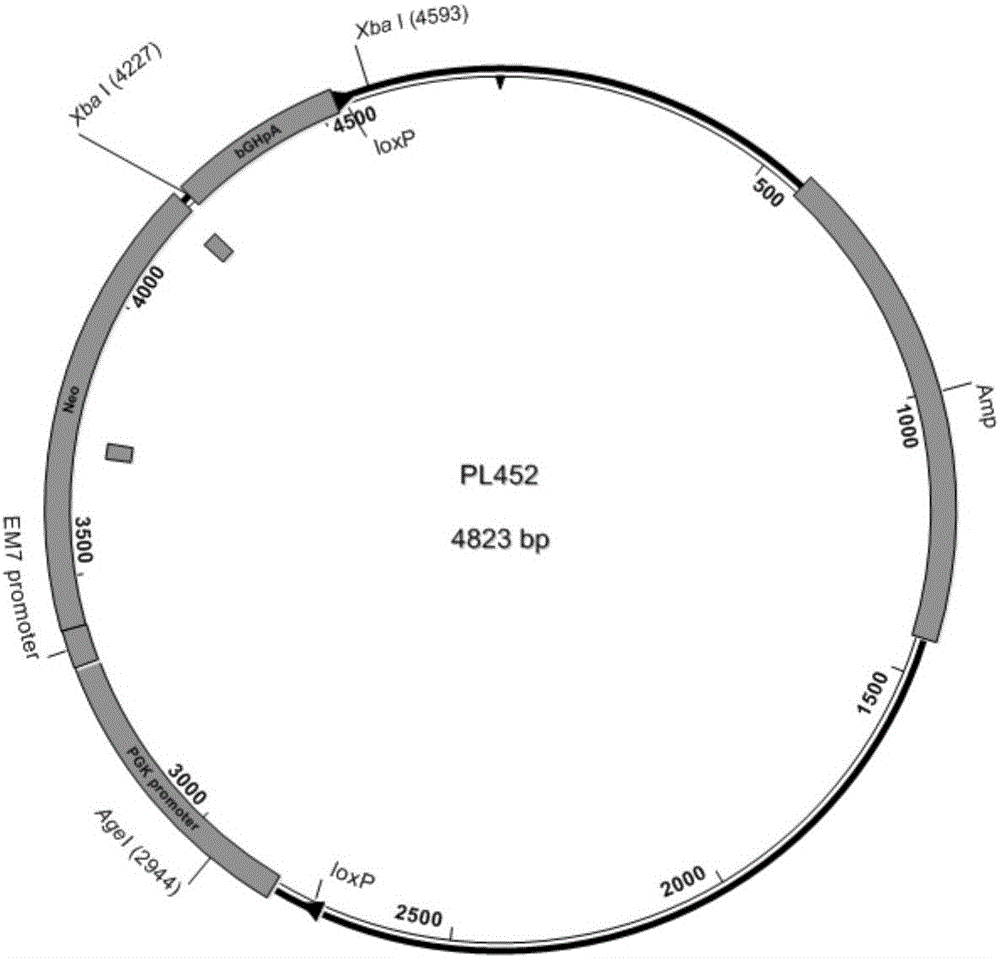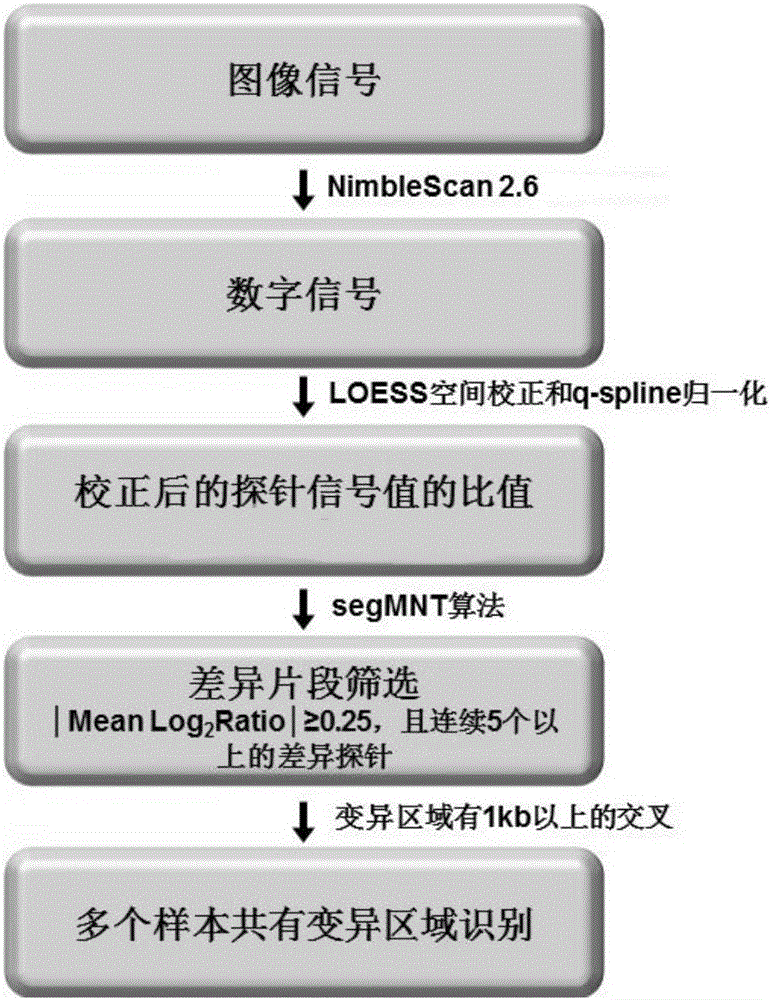Method for high-efficiency establishment of genetically modified animal model through haploid stem cells
A genetic modification and animal model technology, which is applied in the field of using haploid stem cells to efficiently establish genetically modified animal models, which can solve problems such as the reduction of the percentage of embryos born to live to adult mice, the lack of practicality, and the inconsistency of imprinted sperm.
- Summary
- Abstract
- Description
- Claims
- Application Information
AI Technical Summary
Problems solved by technology
Method used
Image
Examples
Embodiment Construction
[0041] experimental method
[0042] 1. Preparation of Vector
[0043] 1.1 Plasmid vector
[0044] 1.1.1 Preparation of Competent Cells
[0045] (1) Streaking plate: Dip a small amount of E.coli DH5α bacterial liquid with a sterilized inoculation loop, and streak on the LB agar plate without antibiotics to gradually dilute the bacterial liquid. Place it upside down in a 37°C bacterial incubator and incubate overnight for 12-14 hours.
[0046] (2) Pick a single colony and inoculate it into 5 ml of LB medium without antibiotics. Shake overnight at 37°C and 250 rpm.
[0047] (3) Inoculate 2ml of turbid bacterial solution into 200ml LB medium without antibiotics, and incubate with shaking at 37°C for 2-3h. Measure OD every half hour 600 , to make it 0.4-0.6.
[0048] (4) The bacteria solution was ice-bathed for 20 minutes. Transfer the ice-bathed bacterial solution to a pre-cooled 50ml centrifuge tube. 4°C, 4000rpm, 10min centrifugation.
[0049] (5) Discard the supernata...
PUM
 Login to View More
Login to View More Abstract
Description
Claims
Application Information
 Login to View More
Login to View More - R&D Engineer
- R&D Manager
- IP Professional
- Industry Leading Data Capabilities
- Powerful AI technology
- Patent DNA Extraction
Browse by: Latest US Patents, China's latest patents, Technical Efficacy Thesaurus, Application Domain, Technology Topic, Popular Technical Reports.
© 2024 PatSnap. All rights reserved.Legal|Privacy policy|Modern Slavery Act Transparency Statement|Sitemap|About US| Contact US: help@patsnap.com










